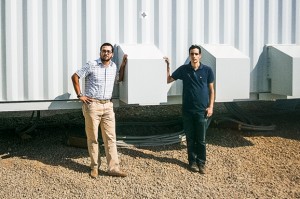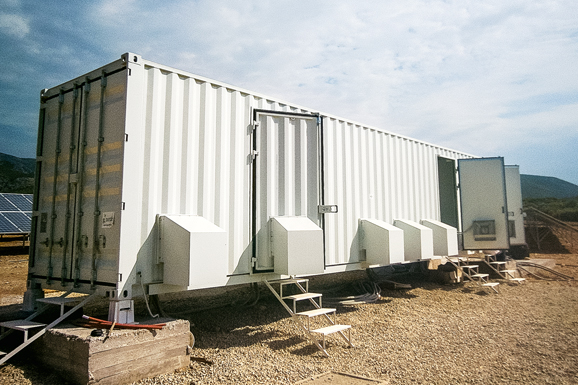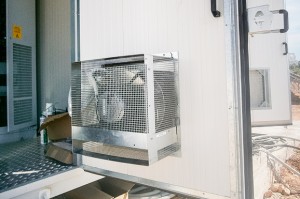Greece’s brilliant sunshine is not just a tourist attraction. The 300 sunny days per year also pay off in another respect: the country long ago discovered its immense potential as a production site for solar energy. Since last year, the Greek government has been intensively subsidising the construction of solar parks in order to strengthen this new branch of the economy. Gnettle has recognised this trend and, since January 2012, has been producing protective containers for the electrical equipment in solar parks. The white structures contain all necessary components for bringing the energy from the photovoltaic system to the mains power supply as electricity, for example transformers and power converters.
Smart solution

John Mylonas, Sales Engineer at Helcoma, and Zois Parthymos, Application Technology specialist at Gnettle
However, the strong Greek sun also heats up the container. So that the heat outside and the heat given off inside by the electrical system do not impair the operation of the equipment, the containers have to be cooled. Usually, this job is done by a relatively low-efficiency split climate control system. However, Gnettle has decided in favour of a smart, energy saving solution; fans with GreenTech EC technology now ensure the proper temperature. Plug fans bring outside air into the container, while an axial fan disperses the heated air to the outside. In co-operation with Helcoma – ebm-papst’s representative in Greece – Gnettle not only attains much higher air performance than with split climate control systems, but also saves energy.
Reacting flexibly
“However, lower power consumption was not the only factor that led us to decide in favour of EC,” says Nikos Kazantzis, Head of Systems Engineering at Gnettle. “The most important thing was that all of the components for controlling the speed are already integrated into the fan, allowing it to be programmed easily.” This is particularly important for this application, as the fans have to react flexibly to both the changing outside temperatures and the variable electricity production and the resulting variable amounts of heat given off.


Leave a comment